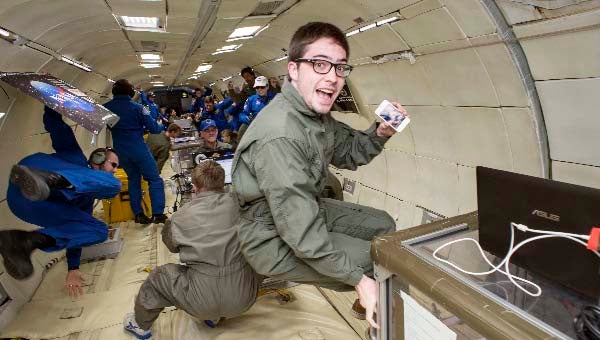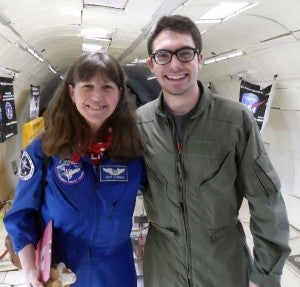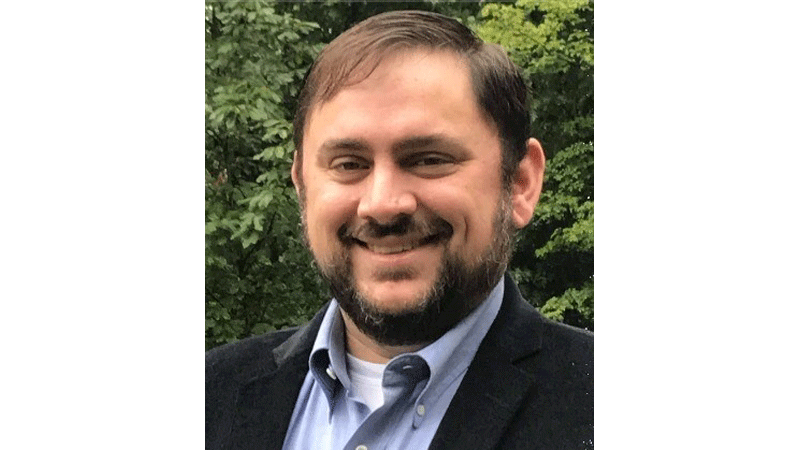Windsor student tests experiment sans gravity
Published 11:28 am Saturday, May 3, 2014

William Archer floats during a NASA-sponsored, zero-gravity flight from Ellington Field in Houston. — ROBERT MARKOWITZ/NASA
WINDSOR—A Windsor High Student has defied the ultimate authority. No, not mom or the principal — gravity.
Free-floating through space was an almost indescribable experience for William Archer, 18.
“It was really amazing,” he said. “They say that zero-gravity is a lot like scuba diving. It’s not, not at all. There is honestly nothing like it in this world.
“You’d sit there and be like, oh I can swim or something, and you’d make the motions and not move at all. It was a really mind-bending thing.”
Archer attends WHS in the morning and The New Horizons Governor’s School for Science and Technology in the afternoon. Recently, he and some of his Governor’s School classmates were invited to the Johnson Space Center in Houston to test out a research project.
“We would design an experiment, and basically if they like it, we got to fly it in zero-gravity,” he said.
The governor’s school had two classes participating in the HUNCH HEXS (High school students United with NASA to Create Hardware, and HEXS is HUNCH Extreme Science). The morning class did not finish its project in time, but the afternoon class, which William was a part of, was successful.
“Through a last-ditch effort, we sent ours in and it got approved,” he said. “It had to do with fuel cells. We were trying to see how molecules break apart in a zero-gravity environment, and how gases can flow and move through.”
Eventually, Archer said, the goal for the class is to create a real-world local oxygen source in zero-gravity.
“One of the problems astronauts have is that carbon dioxide won’t actually disperse in zero-gravity,” he said. “When breathing out, carbon dioxide bubbles around the mouth and they can’t breathe properly. It gives them headaches and a lot of other issues.
“What we want to create is an oxygen source, that on zero-gravity will take carbon dioxide in the air, kind of like our photosynthesis, and it will create a by-product of oxygen.”
Once they got to the Space Center, the first part of the job was to go through the test readiness review.
“All these NASA engineers came in and critiqued our projects, and would just slam it to death and say this isn’t going to work,” he said with a laugh. “Luckily, we didn’t have that happen to us. We had kind of ironed out the issues before, and we didn’t have all the safety problems.”
From there, it was time to go up in the zero-gravity plane and actually test the project. Before they could get off the ground, however, they had to be given a special motion sickness injection of scopolamine.
“Basically, he just came in and jabbed us,” Archer said. “It was pretty bad. You couldn’t see right. You couldn’t focus on anything. It made you hungry. It really messed you up.”
Due to heavy turbulence, the first flight had to be cancelled once they got up in the air, which came as a relief to Archer and his lab partner Matthew DiMarcantonio.
“So, we got off the plane, my partner and I, and we just laid down on the tarmac and went to sleep for two and a half hours,” he said with a laugh. “We were right next to the plane wheels. It was pretty funny.”
On the second attempt, Archer asked for a lesser dose of the drug, and slept it off on the flight up before they got to the altitude to where they would create zero-gravity in a special chamber in the plane.
And then he defied gravity.
“It’s like the coolest thing ever,” Archer said. “We got to do like flips and all sorts of cool stuff.”
That’s not to say that there were not challenges.
“The hardest part about it is you don’t have a sense of direction,” he said. “If I closed my eyes, and I was upside down, I would feel like I was standing right-side up.
“You’d look and see all these people floating with you, and you’d say, well, I’m not upside down, so they must be.”
The disorienting factor did make it tough to actually perform the experiment.
“They told us to make it as autonomous as possible,” Archer said. “But, we kind of overestimated our ability to get our bearings right and everything.”
To help with the bearings, the special chamber switched back and forth between micro- and macro-gravity. Microgravity is zero-gravity. The first two switches were just to get used to the experience. It started out with 10-seconds of microgravity.
“You would just be laying down, and then they told you that they were switching to microgravity, and all of a sudden you’d just start floating,” he said. “That’s when we started moving. At that point, you’d only have like 5 to 6 seconds to get the experiment going and take your data.
“We had to work as a team. I would get the experiment going, and then lay there and wait for them to say microgravity ending. Then I’d yell out the numbers that my partner would have to write down. Then we’d lay down and get ready for the next one. We didn’t get the hang of it until probably like the 20th parabola.”
At the end of the day, they learned that the gases in the cell work the same as they work on the ground, but there was one interesting thing.
“We’d have these transition periods going from micro- into macro-gravity, and from macro- to micro-gravity,” Archer said. “I noticed that the voltage in the current dropped tremendously, so that means that the output of the fuel cell wasn’t doing as well. That’s something we are hoping maybe to test next year and to see why and how that is changing.”
He was able to meet an astronaut during the experience. He met Cady Coleman, who was the head of the expedition.
“She flew with us, which was pretty cool,” Archer said. “I got to be on the plane with a real astronaut showing us how to get used to zero-gravity and stuff.”
It was also cool to see the Space Center itself. Though they spent a lot of time in the hanger, they did get to see the astronaut training facility.
“One of the places we went, which was really cool to me, was the underwater astronaut training facility,” he said. “I am a big scuba diver, so that would be a cool thing to do.”
As far as going to work for NASA one day, he isn’t sure. He’d previously had a bad experience interning with a NASA scientist.
“I don’t know,” he said. “I don’t even know what I want to do, to be honest with you. I’ll just chalk it up to an experience for now, and we’ll see in 4 and a half years where I am then.”
The senior is set to be a University of Pennsylvania student in the fall, where he’ll dual major in computer and cognitive science. He’s both scared and looking forward to attending the Ivy League school.
“Penn has an infamous Wharton curve, where only the top 10 percent of the class gets an A,” he said. “So, that’s going to be scary. But I’m looking forward to it, and I’m already ready to move out. I’m actually counting down the days.”







